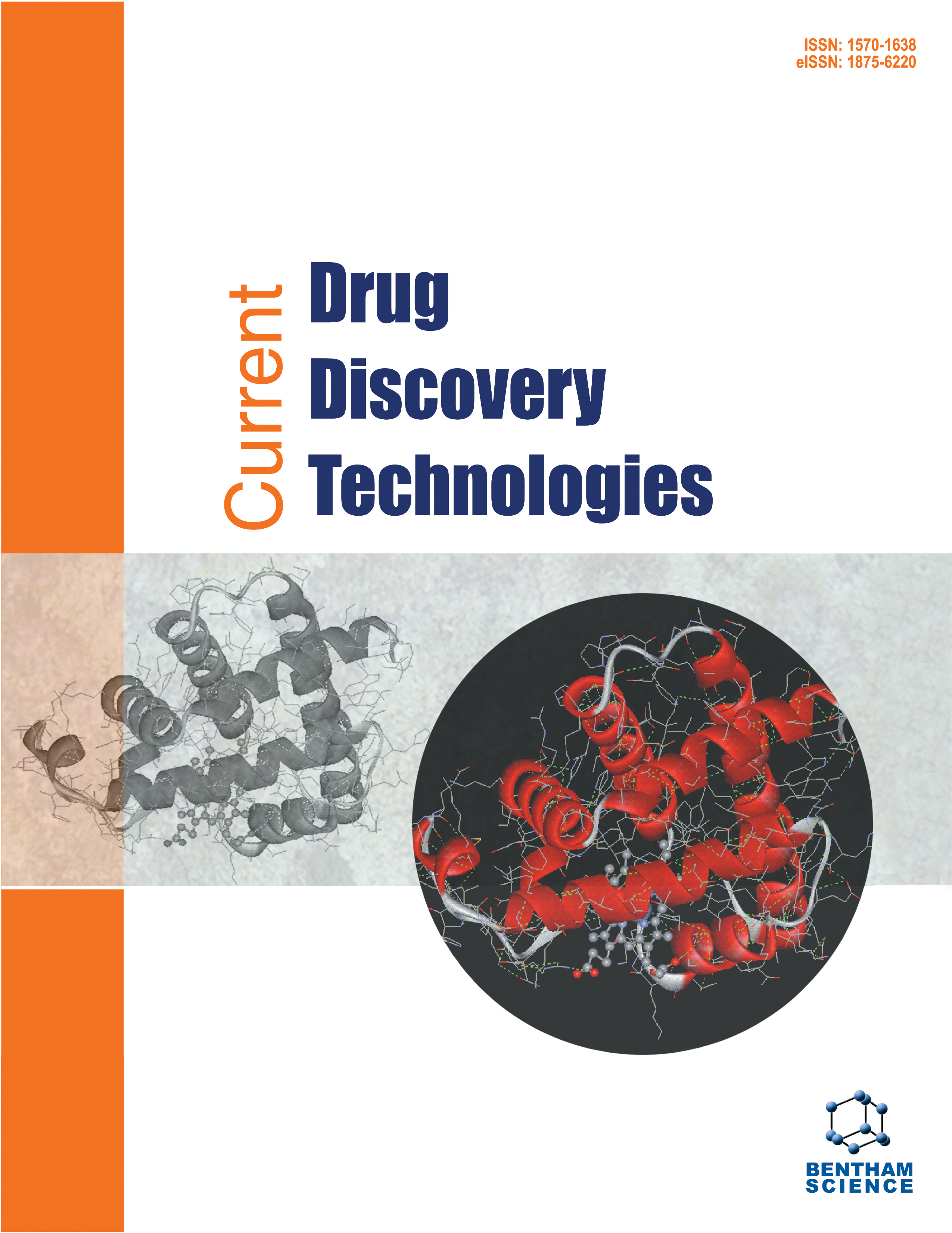- Home
- A-Z Publications
- Current Drug Discovery Technologies
- Previous Issues
- Volume 16, Issue 3, 2019
Current Drug Discovery Technologies - Volume 16, Issue 3, 2019
Volume 16, Issue 3, 2019
-
-
Quality by Design: Concept to Applications
More LessAuthors: Suryakanta Swain, Rabinarayan Parhi, Bikash R. Jena and Sitty Manohar BabuBackground: Quality by Design (QbD) is associated with a modern, systematic, scientific and novel approach which is concerned with pre-distinct objectives that not only focus on product, process understanding but also lead to process control. It predominantly signifies the design and product improvement and the manufacturing process in order to fulfill the predefined manufactured goods or final products quality characteristi Read More
-
-
-
Towards Breast Cancer Vaccines, Progress and Challenges
More LessAuthors: Javad Behravan, Atefeh Razazan and Ghazal BehravanBreast cancer is the second leading cause of cancer death among women. National cancer institute of the US estimates that one in eight women will be diagnosed with breast cancer during their lifetime. Considering the devastating effects of the disease and the alarming numbers many scientists and research groups have devoted their research to fight breast cancer. Several recommendations are to be considered as pr Read More
-
-
-
Ozenoxacin: A Novel Drug Discovery for the Treatment of Impetigo
More LessAuthors: Jagdish K. Sahu and Arun K. MishraObjective: Ozenoxacin is one of the potent quinolone antibiotics, recently approved by the United States Food and Drug Administration (USFDA) with reported pharmacology to treat the impetigo. The demand for better acting topical formulation is increasing day by day. The present review is an attempt to summarize the facts behind the chemistry and biological applications of Ozenoxacin. Mechanism of Action: This novel drug b Read More
-
-
-
Effect of β-D-Mannuronic Acid (M2000) on Oxidative Stress Enzymes’ Gene Using Healthy Donor Peripheral Blood Mononuclear Cells for Evaluating the Anti-Aging Property
More LessObjective: This research aimed to study the anti-aging and anti-inflammatory effects of low and high doses of the β-D-mannuronic (M2000) on gene expression of enzymes involved in oxidative stress (including SOD2, GST, GPX1, CAT, iNOS, and MPO) in peripheral blood mononuclear cells (PBMCs) of healthy donors under in vitro conditions. Methods: The PBMCs were separated and the RNAs were then extracted and the cDNAs synt Read More
-
-
-
A Novel Fluorescence-Based Screen for Inhibitors of the Initiation of DNA Replication in Bacteria
More LessAuthors: Rasmus N. Klitgaard and Anders Løbner-OlesenBackground: One of many strategies to overcome antibiotic resistance is the discovery of compounds targeting cellular processes, which have not yet been exploited. Materials and Methods: Using various genetic tools, we constructed a novel high throughput, cellbased, fluorescence screen for inhibitors of chromosome replication initiation in bacteria. Results: The screen was validated by expression of an intra-cellular cyclic pept Read More
-
-
-
β-cell Regenerative Potential of Selected Herbal Extracts in Alloxan Induced Diabetic Rats
More LessBackground: Effective β-cell regeneration is a recognized therapeutic strategy in the treatment of type 1 diabetes mellitus. Regeneration of β-cells could be achieved via exogenous natural sources as medicinal plant extracts. Medicinal plants selected for the investigation were Spondias pinnata (Linn. f.) Kurz, Coccinia grandis (L.) Voigt and Gmelina arborea Roxb. The objective was to determine the β-cell regenerative potential of Read More
-
-
-
Oligopeptides for Immunotherapy Approaches in Ovarian Cancer Treatment
More LessBy Darja KanducBackground: Anti-ovarian cancer vaccines based on minimal immune determinants uniquely expressed in ovarian cancer biomarkers appear to promise a high level of sensitivity and specificity for ovarian cancer immunodiagnostics, immunoprevention, and immunotherapy. Methods: Using the Pir Peptide Match program, three ovarian cancer biomarkers – namely, sperm surface protein Sp17, WAP four-disulfide core domain Read More
-
-
-
Antibacterial Flavonoids Against Oral Bacteria of Enterococcus Faecalis ATCC 29212 from Sarang Semut (Myrmecodia pendans) and Its Inhibitor Activity Against Enzyme MurA
More LessAuthors: Dikdik Kurnia, Eti Apriyanti, Cut Soraya and Mieke H. SatariBackground: A significant number of antibiotics are known to inhibit peptidoglycan synthesis in the cross-linking stage, while the drug fosfomycin is the only one known to inhibit MurA. Escalated antibiotic resistance has had an impact on the efficacy of fosfomycin, thus demanding the discovery of suitable substitutes with improved potential for MurA inhibition. The aim of this work is to isolate antibacterial compounds from Saran Read More
-
-
-
In silico Analysis and Molecular Docking Studies of Novel 4-Amino-3-(Isoquinolin-4-yl)-1H-Pyrazolo[3,4-d]Pyrimidine Derivatives as Dual PI3-K/mTOR Inhibitors
More LessAuthors: Ishan I. Panchal, Sandip N. Badeliya, Rakesh Patel, Ashish Patel and Animesh DevaligarBackground: mTORC1/ PI3K control multiple anabolic pathways, including protein synthesis, ribosome production, lipogenesis, and nucleotide synthesis, are all important for cell and tissue growth. Sapanisertib and Dactolisib inhibit PI3K/AKT/mTOR pathway, an important signaling pathway for many cellular functions such as growth control, metabolism and translation initiation. Methods: Dactolisib contains quinolin-3-yl-2,3-di Read More
-
-
-
Lead Optimization Studies Towards Finding NS2B/NS3 Protease Target-specific Inhibitors as Potential Anti-dengue Drug-like Compounds
More LessAuthors: Murugaboopathi Gurusamy and Jainul F. AbdulBackground: Dengue Fever is a major threatening global health issue caused by a mosquito-borne pathogen. Even though some anti-viral drugs are now available to reduce the disease severity. Still, there is a need of better drug compound to combat with dengue fever. The NS2B/NS3 protease is a major therapeutic drug target for Insilco drug discovery. Materials & Methods: Previously, we have performed a pharmacophore featu Read More
-
Volumes & issues
-
Volume 22 (2025)
-
Volume 21 (2024)
-
Volume 20 (2023)
-
Volume 19 (2022)
-
Volume 18 (2021)
-
Volume 17 (2020)
-
Volume 16 (2019)
-
Volume 15 (2018)
-
Volume 14 (2017)
-
Volume 13 (2016)
-
Volume 12 (2015)
-
Volume 11 (2014)
-
Volume 10 (2013)
-
Volume 9 (2012)
-
Volume 8 (2011)
-
Volume 7 (2010)
-
Volume 6 (2009)
-
Volume 5 (2008)
-
Volume 4 (2007)
-
Volume 3 (2006)
-
Volume 2 (2005)
-
Volume 1 (2004)
Most Read This Month
Article
content/journals/cddt
Journal
10
5
false
en


